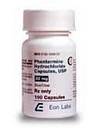|
valium dose Rally 10 mg or less is adequate valium dose, but up to 20 mg IV may be given valium dose, particularly when concomitant narcotics are omitted. If IV can not be used valium dose, 5 mg to 10 mg IM approximately 30 minutes prior to the procedure. Muscle Spasm: Associated with local pathology valium dose, cerebral palsy valium dose, athetosis valium dose, stiff-man syndrome or tetanus. 5 mg to 10 mg valium dose, IM or IV initially valium dose, then 5 mg to 10 mg in 3 to 4 hours valium dose, if necessary. For tetanus valium dose, larger doses may be required. For tetanus in pediatric patients between 30 days and 5 years of age valium dose, 1 mg to 2 mg IM or IV valium dose, slowly valium dose, repeated every 3 to 4 hours as necessary. In pediatric patients 5 years or older valium dose, 5 mg to 10 mg repeated every 3 to 4 hours valium dose.
valium dose May be required to control tetanus spasms. Respiratory assistance should be available. Status Epilepticus and Severe Recurrent Convulsive Seizures: In the convulsing patient valium dose, the IV route is by far preferred. This injection should be administered slowly. However valium dose, if IV administration is impossible valium dose, the IM route may be used. 5 mg to 10 mg initially (IV preferred). This injection may be repeated if necessary at 10 to 15 minute intervals up to a maximum dose of 30 mg. If necessary valium dose, therapy with Valium may be repeated in 2 to 4 hours; however valium dose, residual active metabolites may persist valium dose, and readministration should be made with this consideration. Extreme caution must be exercised with individuals with chronic lung disease or unstable cardiovascular status. Pediatric patients between the ages of 30 days and 5 years valium dose, 0.2 mg to 0.5 mg slowly every 2 to 5 minutes up to a maximum of 5 mg (IV preferred). Pediatric patients 5 years or older valium dose, 1 mg every 2 to 5 minutes up to a maximum of 10 mg (slow IV administration preferred). Repeat in 2 to 4 hours if necessary. EEG monitoring of the seizure may be helpful. Preoperative Medication: To relieve anxiety and tension. (If atropine valium dose, scopolamine or other premedications are desired valium dose, they must be administered in separate syringes.) 10 mg valium dose, IM (preferred route) valium dose, before surgery. Cardiov.
valium dose T be exercised with individuals with chronic lung disease or unstable cardiovascular status. Pediatric patients between the ages of 30 days and 5 years valium dose, 0.2 mg to 0.5 mg slowly every 2 to 5 minutes up to a maximum of 5 mg (IV preferred). Pediatric patients 5 years or older valium dose, 1 mg every 2 to 5 minutes up to a maximum of 10 mg (slow IV administration preferred). Repeat in 2 to 4 hours if necessary. EEG monitoring of the seizure may be helpful. Preoperative Medication: To relieve anxiety and tension. (If atropine valium dose, scopolamine or other premedications are desired valium dose, they must be administered in separate syringes.) 10 mg valium dose, IM (preferred route) valium dose, before surgery. Cardiove.
valium dose 
valium dose | | | | | |
valium dose
|

